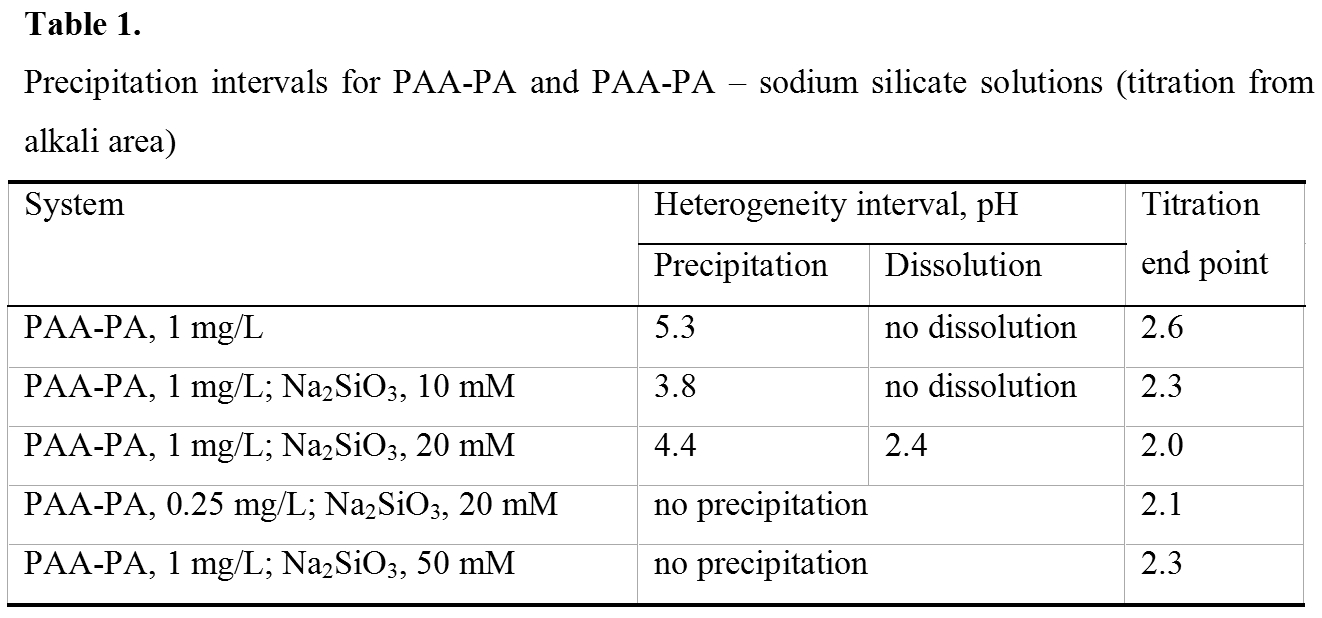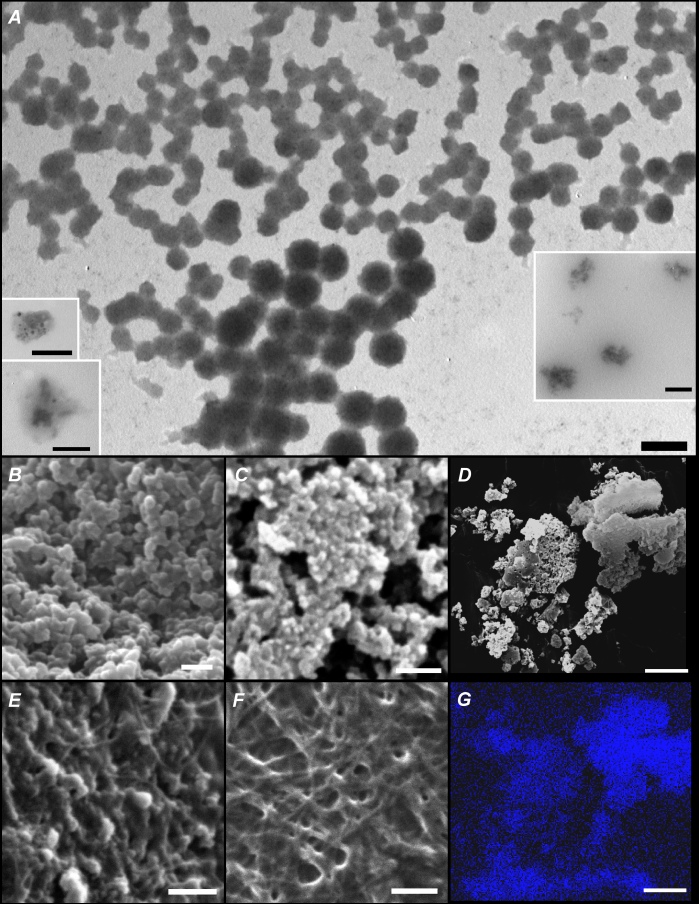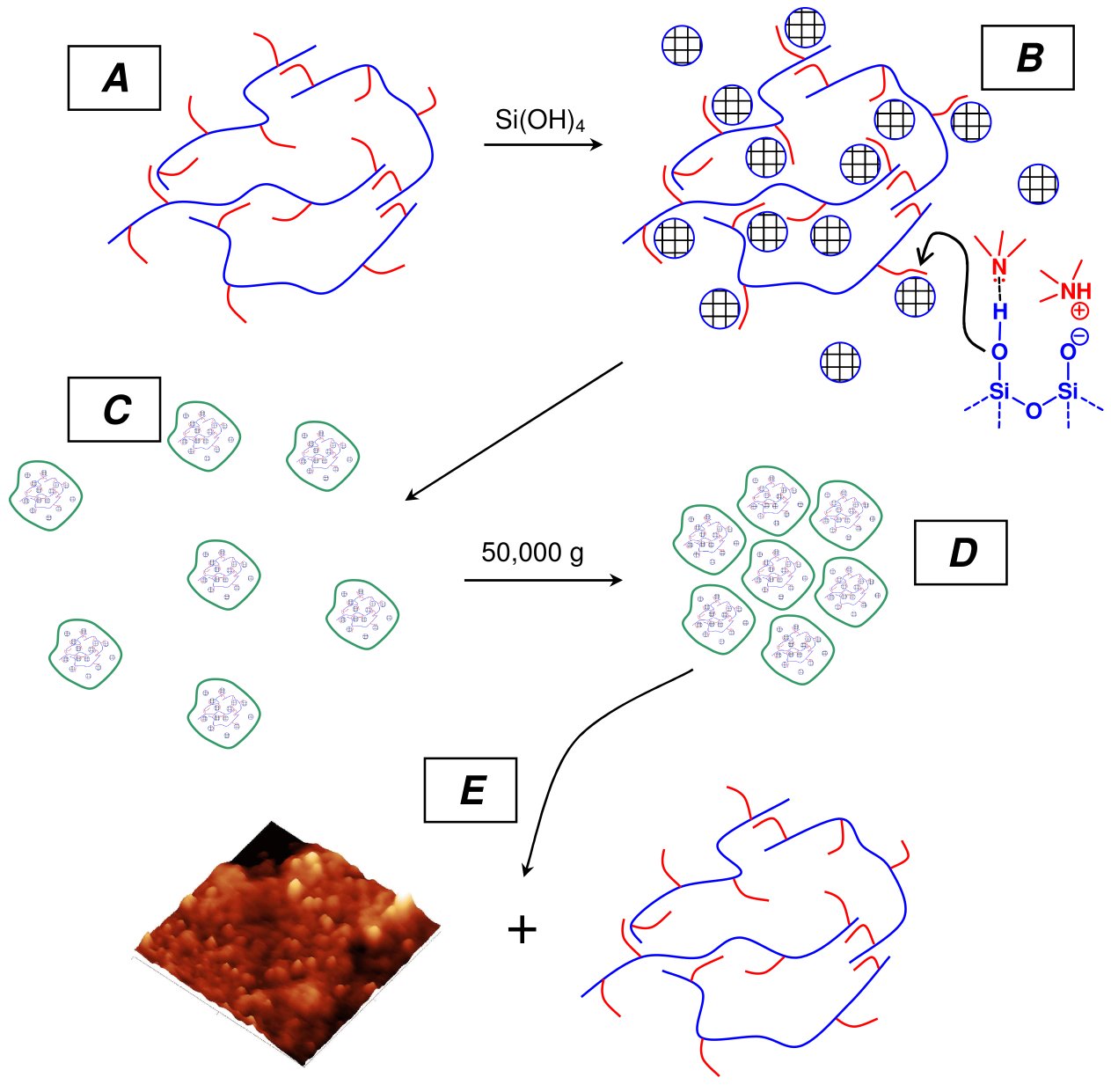.
Oven
Amine1
Annenkov V.V., Pal'shin V.A., Verkhozina O.N., Larina L.I., Danilovtseva E.N. Composite nanoparticles: a new way to siliceous materials and a model of biosilica synthesis. Materials Chemistry and Physics (2015) V. 165. pp. 227-234., DOI: 10.1016/j.matchemphys.2015.09.022 (IF=2.259)
A new polyampholyte based on poly (acrylic acid) which bears pendant polyamine oligomeric chains (average number of the nitrogen atoms is 11.2) is obtained. This polymer is a model of silaffins - proteins playing important role in formation of siliceous structures in diatom algae and sponges. The polymer catalyses condensation of silicic acid. The obtained solutions contain oligosilicates coordinated with the polymer chains. The action of 50,000 g gravity on this solution results in concentrating-induced condensation of the pre-condensed siliceous oligomers. The obtained solid silica contains 4% admixture of the organic polymer which is close to the silica from diatom frustules. These results confirm the hypothesis about formation of biosilica under the action of desiccation agent, e.g. aquaporins. The formation of solid substances during centrifugation of solutions containing soluble oligomers is a new promising approach to inorganic and composite materials which allows to work in aqueous medium and to reuse the organic polymer.
 Scheme 1. Synthesis of poly (acrylic acid) with grafted polyamine chains (PAA-PA).
Scheme 1. Synthesis of poly (acrylic acid) with grafted polyamine chains (PAA-PA).

Figure 2. FTIR spectra of PAA-PA copolymer, silica obtained from 100 mM sodium silicate and HCl at pH 5.5 and the precipitate obtained by centrifugation of the PAA-PA - silicic acid solutions (1 mg/mL of PAA-PA, 50 mM of silicic acid). The insertion represents ATR-FTIR spectra of solutions containing 50 mM silicic acid and 50 mM silicic acid with 1 mg/mL PAA-PA at pH 5.5. The solution spectra were recorded relative to water after 1 h after pH adjusting to 5.5.

 Figure 3. Effect of PAA-PA on condensation of silicic acid at pH 5.5. Initial concentration of Si(OH)4 is 50 mM, PAA-PA - 1 mg/mL.
Figure 3. Effect of PAA-PA on condensation of silicic acid at pH 5.5. Initial concentration of Si(OH)4 is 50 mM, PAA-PA - 1 mg/mL.
 Figure 4. Size distribution of 1 mg/mL PAA-PA solution (a and b), of the particles formed on condensation of silicic acid (c, 10 mM and d, 20 mM) and of the mixed PAA-PA - Si(OH)4 solutions (e, f - 10, g, h - 20 and i - 50 mM Si(OH)4) at pH 5.5. The data for a, e and g curves were obtained at 15 min after pH adjusting to 5.5, i - after 2 h and the other curves - after 4 days.
Figure 4. Size distribution of 1 mg/mL PAA-PA solution (a and b), of the particles formed on condensation of silicic acid (c, 10 mM and d, 20 mM) and of the mixed PAA-PA - Si(OH)4 solutions (e, f - 10, g, h - 20 and i - 50 mM Si(OH)4) at pH 5.5. The data for a, e and g curves were obtained at 15 min after pH adjusting to 5.5, i - after 2 h and the other curves - after 4 days.
 Figure 5. TEM (A) images of PAA-PA - silicic acid freeze-dried solutions and SEM (B-G) images of the precipitates obtained by centrifugation of the PAA-PA - silicic acid solutions: 1 mg/mL of PAA-PA, 20 (A) 10 (B), and 50 (C-G) mM of silicic acid. (D) and (G) represent SEM image and EDAX silicon mapping of the precipitate. Scale bar: 200 nm (A), 500 nm (B, C, E and F) and 5 Ám (D and G).
Figure 5. TEM (A) images of PAA-PA - silicic acid freeze-dried solutions and SEM (B-G) images of the precipitates obtained by centrifugation of the PAA-PA - silicic acid solutions: 1 mg/mL of PAA-PA, 20 (A) 10 (B), and 50 (C-G) mM of silicic acid. (D) and (G) represent SEM image and EDAX silicon mapping of the precipitate. Scale bar: 200 nm (A), 500 nm (B, C, E and F) and 5 Ám (D and G).
 Figure 6. Scheme of the silicic acid condensation in the presence of PAA-PA (A-C) following with centrifugation of the soluble composite nanoparticles (D and E).
Figure 6. Scheme of the silicic acid condensation in the presence of PAA-PA (A-C) following with centrifugation of the soluble composite nanoparticles (D and E).
Conclusions
We have obtained a new polyampholyte PAA-PA which bears pendant polyamine oligomeric chains. This polymer is a model of silaffins - proteins playing important role in formation of siliceous structures in diatom algae and sponges. The study of silicic acid condensation in the presence of PAA-PA showed catalytic effect of the polymer on the condensation. The obtained solutions contain oligosilicates coordinated with PAA-PA chains. Sedimentation of the composite nanoparticles under increased gravity resulted in concentrating induced condensation of the pre-condensed siliceous oligomers giving rise to solid silica containing admixture of the organic polymer. This product is rather closer to the silica from diatom frustules than composite precipitates fallen from solutions of silicic acid and polymeric amines. We consider our results confirm the hypothesis about formation of biosilica under the action of desiccation agent, e.g. aquaporins [M.A. Grachev, V.V. Annenkov, Y.V. Likhoshway, Bioessays 30 (2008) 328-337.].
The formation of solid substances during centrifugation of solutions containing soluble oligomers is a new promising approach to inorganic and composite materials. This bioinspired approach allows to obtain a stable aqueous solution of the composite precursor and to carry out the final condensation without evaporation of the solvent or precipitation with the addition of non-solvent. The remaining solution contains the main part of the initial organic polymer and can be reused.






